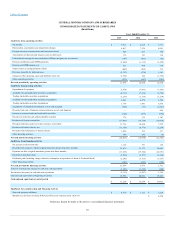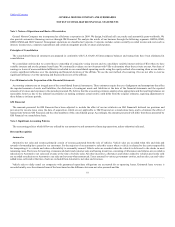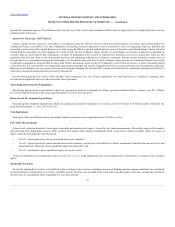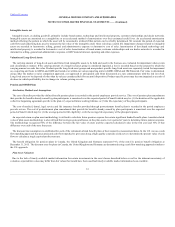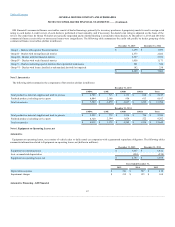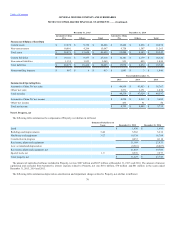General Motors 2015 Annual Report Download - page 68
Download and view the complete annual report
Please find page 68 of the 2015 General Motors annual report below. You can navigate through the pages in the report by either clicking on the pages listed below, or by using the keyword search tool below to find specific information within the annual report.
Table of Contents
GM Financial utilizes interest rate cap and interest rate swap agreements to manage interest rate risk. The change in fair value of the cap and swap
agreements is recorded in GM Financial interest, operating and other expenses. Cash flows for all derivative financial instruments are classified as operating
activities.
GM Financial also utilizes certain interest rate swap agreements as fair value hedges of fixed-rate debt. The risk being hedged is the risk of changes in the
fair value of the hedged debt attributable to changes in the benchmark interest rate. If the hedge relationship is deemed to be highly effective and the swap
has been designated as a fair value hedge, the changes in the fair value of the hedged debt are recorded in debt with the offset in GM Financial interest,
operating and other expenses. The change in fair value of the related derivative (excluding accrued interest) is also recorded in GM Financial interest,
operating and other expenses.
In 2015 we adopted ASU 2015-02, “Amendments to the Consolidation Analysis” (ASU 2015-02), which is effective for annual reporting periods beginning
on or after December 15, 2015, with early adoption permitted. ASU 2015-02 requires us to reassess whether certain entities should be consolidated. Also in
2015 we adopted the provisions of ASU 2015-03, “Simplifying the Presentation of Debt Issuance Costs” (ASU 2015-03), whereby debt issuance costs
associated with non-revolving debt are presented as a reduction to the debt principal balance. The adoption of ASU 2015-02 and ASU 2015-03 did not have
a material impact on our consolidated financial statements. Certain prior year amounts were reclassified to conform to our current year presentation.
In 2015 we also adopted the provisions of ASU 2015-07, “Disclosures for Investments in Certain Entities that Calculate Net Asset Value per Share (or Its
Equivalent)”, in which investments measured at fair value using the net asset value per share method (or its equivalent) as a practical expedient are not
required to be categorized in the fair value hierarchy and are separately presented to permit reconciliation of total pension plan assets. Refer to Note 13 for
details of the impact of this adoption. Certain prior year amounts were reclassified to conform to our current year presentation.
In November 2015 the Financial Accounting Standards Board (FASB) issued ASU 2015-17, “Balance Sheet Classification of Deferred Taxes” (ASU 2015-
17), which changes how deferred taxes are classified on our balance sheets and is effective for financial statements issued for annual periods beginning after
December 15, 2016, with early adoption permitted. ASU 2015-17 requires all deferred tax assets and liabilities to be classified as non-current. Upon adoption,
we anticipate reclassifying deferred income taxes of approximately $9 billion from current to non-current assets.
In May 2014 the FASB issued ASU 2014-09, “Revenue from Contracts with Customers” (ASU 2014-09), which requires us to recognize revenue when a
customer obtains control rather than when we have transferred substantially all risks and rewards of a good or service and requires expanded disclosures. ASU
2014-09, as amended, is effective for annual reporting periods beginning after December 15, 2017, with early adoption permitted as of annual periods
beginning after December 15, 2016. We continue to assess the overall impact the adoption of ASU 2014-09 will have on our consolidated financial
statements.
In January 2016 the FASB issued ASU 2016-01, “Recognition and Measurement of Financial Assets and Financial Liabilities” (ASU 2016-01), which
requires equity investments that are not accounted for under the equity method of accounting to be measured at fair value with changes recognized in net
income and updates certain presentation and disclosure requirements. ASU 2016-01 is effective beginning after December 15, 2017 and we are currently
assessing the impact the adoption will have on our consolidated financial statements.
The following table summarizes the fair value of cash equivalents and marketable securities which approximates cost (dollars in millions):
64



